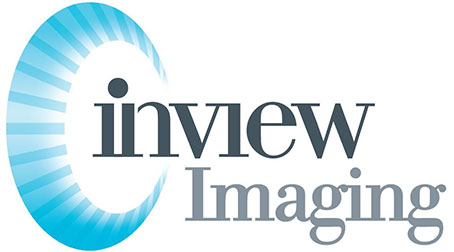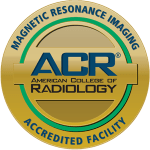Unravel the mystery behind 3D and 2D tomographic mammography with our comprehensive guide. Discover the key differences, benefits, and considerations of cancer to help you make informed decisions about your health. From improved accuracy to reduced recall rates, we break down the essential aspects of each technology, including conventional 2D mammogram and dose. Dive into this comparison to understand which option aligns best with your needs.
Get ready to delve into the world of mammography like never before! Scroll down for reviews of our top picks and unlock valuable insights on 3D versus 2D tomographic mammography dose.
1. Image Dimensionality and Detail
3D tomographic mammography offers a significant advantage over its 2D counterpart in terms of providing a more detailed view of breast tissue. By capturing multiple images from different angles, 3D imaging creates a layered representation that enables radiologists to examine the breast tissue in slices or planes. This advanced technology allows for a more comprehensive evaluation, especially for women with dense breast tissue.
The three-dimensional images produced by 3D tomographic mammography enhance the detection of abnormalities within the breast. Unlike conventional 2D mammograms that may miss certain lesions due to overlapping tissues, the additional imaging techniques used in 3D mammography help reduce this issue significantly. As a result, early signs of potential health concerns can be identified promptly, leading to timely intervention and improved outcomes.
2. Radiation Exposure
3D tomographic mammography may involve slightly higher radiation exposure compared to 2D mammography due to the additional images taken from different angles. Despite this, the benefits of enhanced diagnostic accuracy and reduced false positives often outweigh the minimal increase in radiation dose.
It is crucial to understand that both 2D and 3D mammography adhere to safety limits set by regulatory bodies concerning radiation doses. The slight elevation in radiation exposure with 3D mammography is a trade-off for improved detection capabilities, especially for patients with dense breast tissue or those at high risk for breast cancer.
Radiologists consider various factors when recommending between 2D and 3D mammograms, including a patient’s health history, breast density, and overall risk profile. While minimizing radiation exposure is essential, ensuring accurate and timely detection of abnormalities like early-stage cancers remains paramount in improving patient outcomes.

3. Diagnostic Accuracy and Detection Rates
Studies have consistently demonstrated that 3D tomographic mammography surpasses traditional 2D mammography in detecting invasive cancers, thereby enhancing cancer detection rates significantly. The utilization of 3D imaging techniques has proven to be instrumental in decreasing false positives and unnecessary callbacks for additional testing, which ultimately leads to better patient outcomes.
By integrating both 2D and 3D imaging, healthcare providers can further elevate diagnostic accuracy levels, particularly among women with dense breast tissue. This combined approach allows for a more comprehensive assessment of breast health by offering a multi-dimensional view that enhances the identification of abnormalities that might be obscured in traditional 2D scans.
Multiple studies have underscored the superiority of 3D mammographyEmphasizing its role as a pivotal tool in improving screening outcomes for patients. The ability of this advanced technology to provide clearer images and more precise data enables healthcare professionals to make informed decisions promptly, facilitating timely interventions and personalized treatment plans tailored to each individual’s needs.
Final Remarks
You’ve delved into the world of 3D and 2D tomographic mammography, exploring their differences in image dimensionality, radiation exposure, diagnostic accuracy, and detection rates. Understanding these nuances is crucial for making informed decisions about your healthcare. Remember, each aspect plays a vital role in the effectiveness of mammographic screenings.
As you navigate the realm of medical imaging technologies, consider consulting with healthcare professionals to determine the most suitable option for your needs. Stay proactive about your health by scheduling regular screenings and staying informed about advancements in diagnostic tools. Your commitment to staying informed and proactive can make a significant impact on your well-being.
Frequently Asked Questions
Is 3D tomographic mammography better than 2D in terms of image detail and radiation dose?
3D tomographic mammography provides better image detail compared to 2D because it captures multiple images from different angles, allowing for a more comprehensive view of the breast tissue.
Which technology exposes patients to less radiation: 3D or 2D mammography?
3D tomographic mammography typically exposes patients to slightly more radiation than traditional 2D mammography due to capturing multiple images. However, advancements are being made to reduce radiation exposure in newer systems.
Does 3D tomographic mammography offer higher diagnostic accuracy and detection rates for breast cancer than traditional 2D imaging?
Yes, studies have shown that combining both technologies can lead to higher diagnostic accuracy and improved cancer detection rates compared to using either method alone. The additional information provided by the 3D images enhances radiologists’ ability to detect abnormalities.
Are there any drawbacks associated with opting for 3D tomographic mammography over conventional 2D imaging, in terms of radiation dose, breast cancer, and cancers?
One potential drawback is the increased cost associated with utilizing 3D technology. Interpreting the additional data from a three-dimensional scan may require more time and expertise on behalf of radiologists compared to reading traditional two-dimensional images.
Can individuals choose between having a standard (2d) or advanced (3d) mammogram based on their preference or specific medical needs?
In many cases, individuals may have the option to choose between standard (2D) and advanced (3D) mammograms based on factors such as personal preference, risk factors for breast cancer, and recommendations from healthcare providers. It’s essential for patients to discuss these options with their healthcare team.


